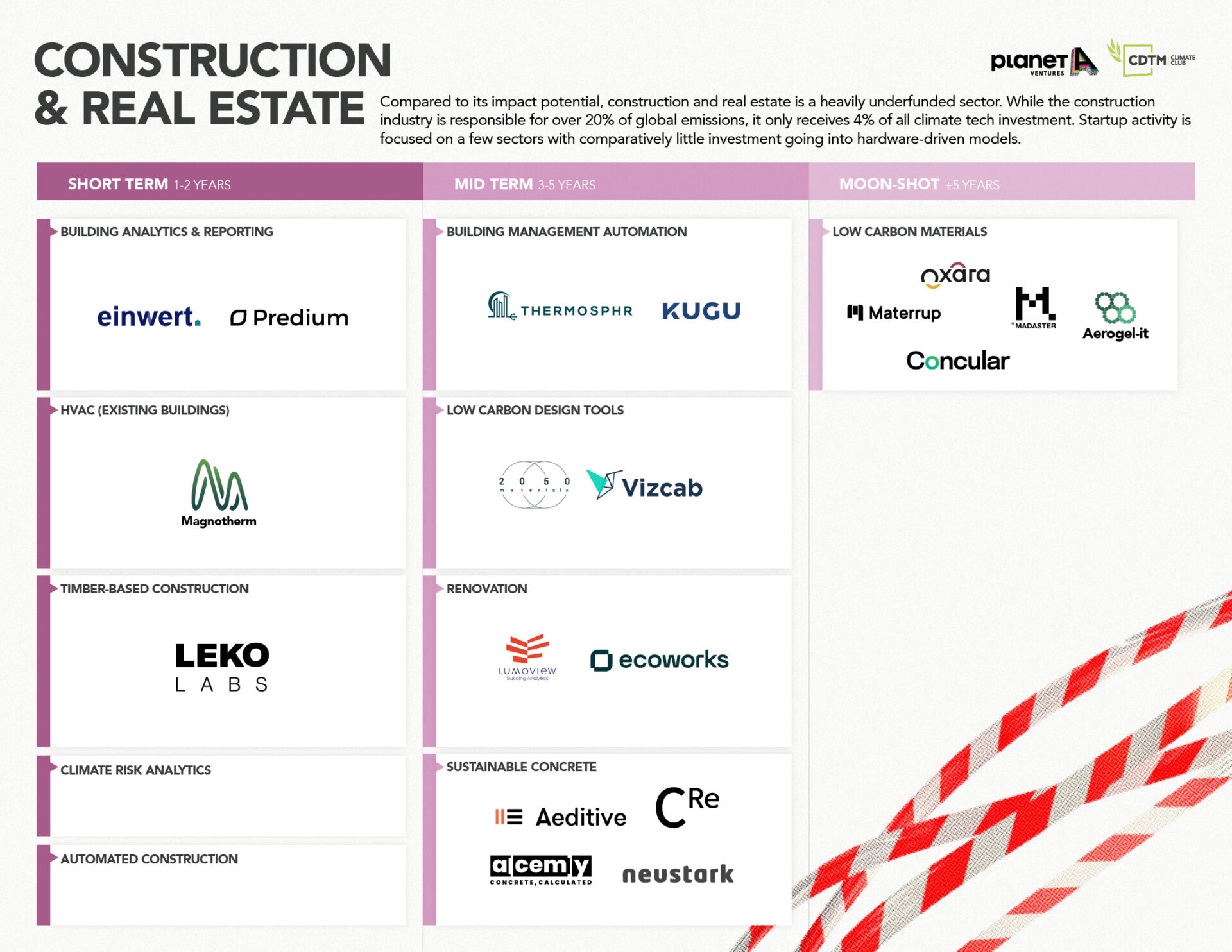
In terms of its impact potential, construction and real estate is a heavily underfunded sector. While the construction industry is responsible for over 20% of global emissions, it only receives 4% of all climate tech investment. Start-up activity is focused on a few sectors with comparatively little investment going into hardware-driven models.
Our investment hypothesis is driven by:
1 New buildings
- Early design choices have a large impact on CO2 emissions. Driven by regulation, low carbon design is a huge lever for reducing embodied carbon emissions
- Automated construction and prefab offer promising pathways to deliver affordable and sustainable houses at scale
- Climate risk analytics is becoming increasingly important as large asset managers want to assess the climate-related risk profile of their portfolios
2 Existing buildings
- New EU energy efficiency norms put pressure on 35-40M buildings until 2030, which offers a big opportunity for serial renovation and retrofitting actions such as insulation
- Managing heating, ventilation and air conditioning (HVAC) is moving on from analytics to automation and optimisation, offering large potential for energy savings
3 Building materials
- Cement is responsible for 8% of global greenhouse gases. Increasing the efficiency of cement production, sequestering CO2 in cement, and developing cement alternatives are all promising pathways for addressing this issue
- Timber-based construction and bio-based materials are also promising pathways in the longer-term


